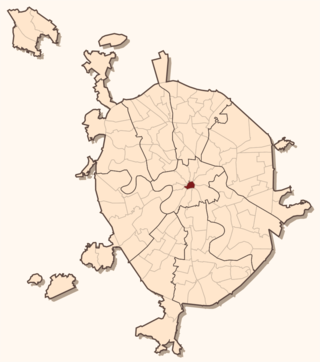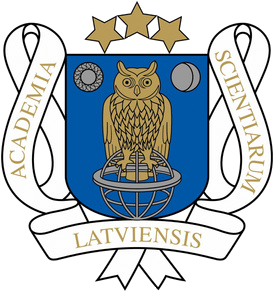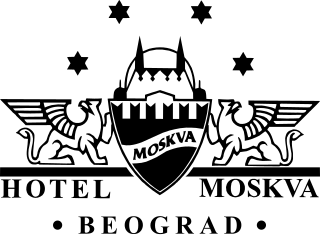
The White House, also known as the Russian White House and previously known as the House of Soviets of Russia, is a government building in Moscow. It stands on the Krasnopresnenskaya Embankment. The building serves as the primary office of the government of Russia and is the official workplace of the Russian Prime Minister.

The Rossiya Hotel was a hotel in Moscow and was the largest hotel in the world from 1967 to 1980. Until its closure in 2006, it remained the second largest hotel in Europe, with 3,182 rooms. Throughout its existence, the hotel welcomed about ten million guests, including more than two million foreigners. Famous hotel guests included Mikhail Gorbachev, George H. W. Bush and Mike Tyson.

The Seven Sisters are a group of seven skyscrapers in Moscow designed in the Stalinist style. They were built from 1947 to 1953. At the time of construction, they were the tallest buildings in Europe, and the main building of Moscow State University remained the tallest building in Europe until 1990.

Stalinist architecture, mostly known in the former Eastern Bloc as Stalinist style or Socialist Classicism, is the architecture of the Soviet Union under the leadership of Joseph Stalin, between 1933 and 1955. Stalinist architecture is associated with the Socialist realism school of art and architecture.

Okhotny Ryad is a station on the Sokolnicheskaya Line of the Moscow Metro. It is situated in the very centre of Moscow in the Tverskoy District, near the Kremlin, Manezhnaya Square and State Duma. It is named after a nearby street, whose name literally means "hunters' row".

Kitay-gorod, also referred to as the Great Possad in the 16th and 17th centuries, is a cultural and historical area within the central part of Moscow in Russia, defined by the remnants of now almost entirely razed fortifications, narrow streets and very densely built cityscape. It is separated from the Kremlin by the Red Square. Kitay-gorod does not constitute a district (raion), as there are no resident voters, thus, municipal elections are not possible. Rather, the territory has been part of Tverskoy District, and the Central Administrative Okrug authorities have managed the area directly since 2003.

The Latvian Academy of Sciences is the official science academy of Latvia and is an association of the country's foremost scientists. The academy was founded as the Latvian SSR Academy of Sciences. It is located in Riga. The current President of the academy is Ivars Kalviņš.

Zaryadye is a historical district in Moscow established in the 12th or 13th century within Kitai-gorod, between Varvarka Street and the Moskva River. The name means "the place behind the rows", i.e., behind the market rows adjacent to Red Square.

Hotel Moskva is a four star hotel in Belgrade, one of the oldest currently operating in Serbia. The building has been under governmental protection since 1968. Originally operating as a 36-room inn within the multi-purpose Palace Rossiya, whose almost three-year construction and January 1908 opening represented a major investment of the Russian Empire in the Serbian economy, Hotel Moskva eventually expanded its facilities to take up the entire palace.

Moskvoretskaya Embankment is a major street, located in the Kitay-Gorod administrative district in central Moscow, running along the Moskva River.
The Narkomtiazhprom Building is a portmanteau for the People's Commissariat of Heavy Industry that was conducting a 1934 architectural design contest for the building of the People's Commissariat of Heavy Industry, constructed in Red Square, Moscow. Notable entrants included Ivan Leonidov, Konstantin Melnikov, Vesnin brothers and Ivan Fomin.

The Lakhta Centre is an 87-story skyscraper built in the northwestern neighbourhood of Lakhta in Saint Petersburg, Russia. Standing 462 metres (1,516 ft) tall, it is the tallest building in both Russia and Europe, and the sixteenth-tallest building in the world. It is also the second-tallest structure in Russia and Europe, behind the Ostankino Tower in Moscow, in addition to being the second-tallest twisted building and the northernmost skyscraper in the world.

The City of Capitals is a mixed-use complex composed of two skyscrapers and an office building located on plot 9 in the Moscow International Business Center in Moscow, Russia with a total area of 288,680 square metres (3,107,300 sq ft). The two skyscrapers are named after the two historical capitals of Russia: Moscow and Saint Petersburg. Construction of the complex began in 2005, with the office building completed in 2008 and the two skyscrapers completed in 2009.

The Moskva Pool was, for a time, the world's largest open air swimming pool.

Kotelnicheskaya Embankment Building is one of seven Stalinist skyscrapers laid down in September 1947 and completed in 1952, designed by Dmitry Chechulin and Andrei Rostkovsky. The main tower has 32 levels and is 176 metres (577 ft) tall. At the time of construction it was the tallest building in Europe.
Dmitry Nikolaevich Chechulin was a Russian Soviet architect, city planner, author, and leading figure of Stalinist architecture.

Hotel Ukraina, also branded and marketed as the Radisson Collection Hotel, Moscow, is a five-star luxury hotel in the city centre of Moscow, on a bend of the Moskva River. The hotel is one of the "Seven Sisters", and stands 206 metres (676 ft) tall. It is the tallest hotel in Russia, the tallest hotel in Europe, and the 52nd-tallest hotel in the world. It is a Radisson Collection hotel, managed by the Rezidor Hotel Group.

The Red Gate Building is one of seven Stalinist skyscrapers, designed by Alexey Dushkin. Its name comes from the Red Gate square.

The Neva Towers, formerly the Renaissance Moscow Towers, is a complex of two skyscrapers located on plots 17 and 18 of the Moscow International Business Center (MIBC) in Moscow, Russia. Tower 1, at 302 metres tall with 65 floors, is the ninth-tallest building in Europe. Tower 2, at 345 metres tall with 79 floors, is the tallest residential building in Europe and the fourth-tallest building in Europe. The complex was completed in 2020.

Zaryadye Park is a landscape urban park located adjacent to Red Square in Moscow, Russia, on the site of the former Zaryadye district. The park was inaugurated on 9 September 2017 by Russian President Vladimir Putin and Moscow Mayor Sergey Sobyanin.



















